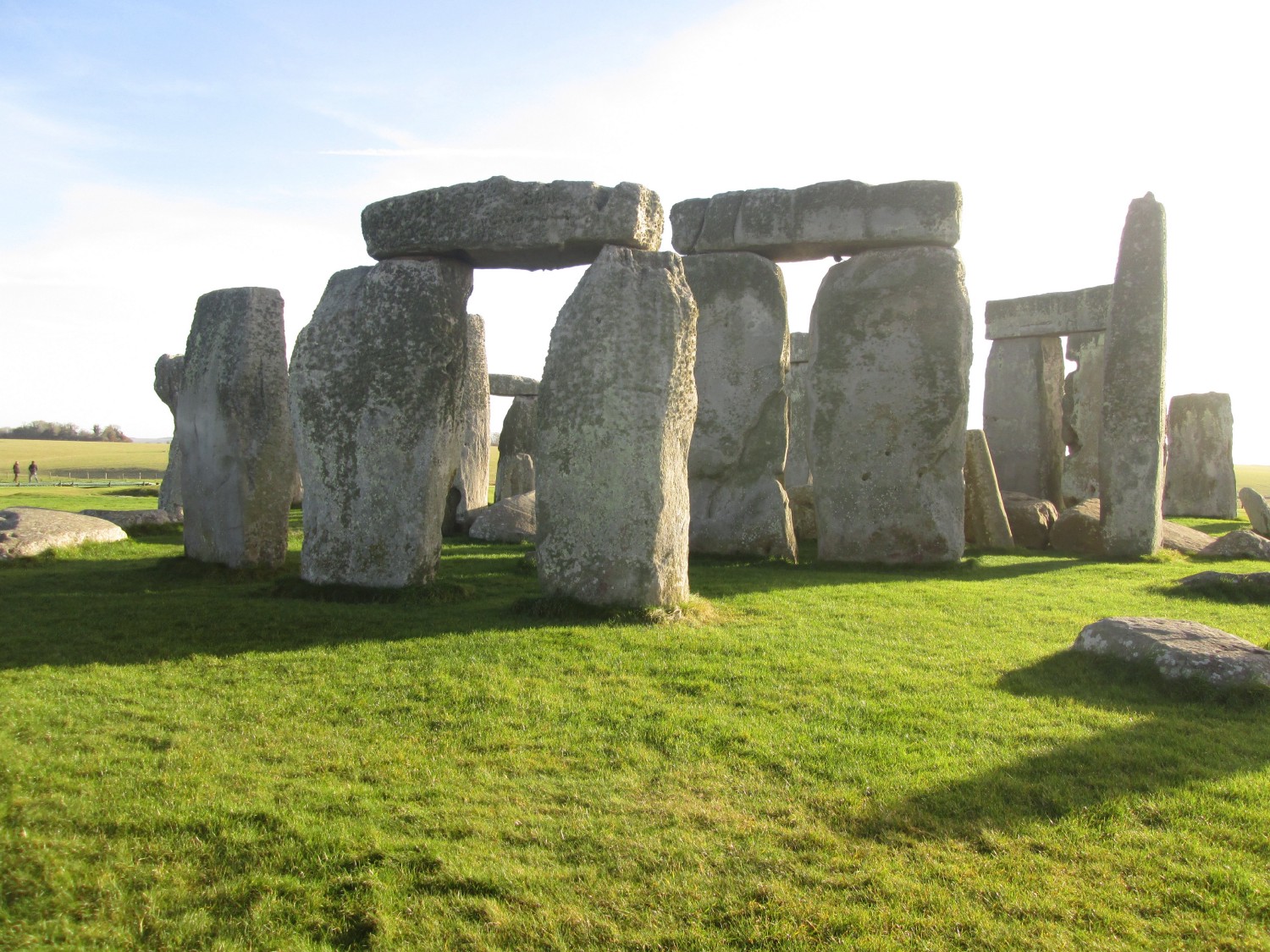There are several special places on the planet that I love to revisit as part of a sort of soul renewal effort. Stonehenge is one of my favorite “wonderment” locations. I’ve seen it in three different seasons now, and in various decades: spring, summer, and fall. When I first went, you parked near a fence, and could access the Stones area through a small tunnel. Now, you are taken to the site from a Visitor’s Center in small buses labeled “To The Stones.” I hope to visit it again some day, in winter.
Even on a cold November morning surrounded by folks jammed around their selfie wands to capture the Stones in the background, Stonehenge filled me with a wordless wonder. It is now-and-hopefully-forever breathtaking.
As I walked the path around the Stone Circle, I read each instructive panel, including one about another numinous place I love: Newgrange, in Ireland. Although quite different in construction, both Neolithic sites mark seasonal solstices, with Newgrange known for its winter solstice charting. It is unforgettable to be inside the dark Newgrange entombment and see a recreation of how the winter solstice light breaks through the special shafts to bring illumination, a new hope from darkness.
These are just two examples of places I find “awesome.” Nature is a major source of awe for most of us; creativity inspires wonder through the arts. Scientific discoveries induce awe. I recently saw a museum exhibit that gave me goosebumps. The list of “awesome” sources goes on and on, depending on the individual, although there is often a collective aspect to experiencing “wonder.”
Why do humans need awe? What do we get out of it? I know that “awe” brings balance into my own life: it allows me to focus on important things far greater than just “me.” Whenever I go to Stonehenge, I first notice its stunning beauty. Then I think about how hard it must have been to shape and transport the Stones, and how many thousands of years ancient people used that site (and environs) for rituals, and what their believes were. In Newgrange, because it’s a tomb, I found myself contemplating the meaning of life, and what being alive meant to those who built it — yes their quotidian existence but also imagining their hopes and dreams.
The sacrality of wonder — or the holy aspects of the numen — motivated theologian Rudolph Otto to coin the word “numinous” in 1923 (a term later used by C.G. Jung in his work). The Latin word numen, upon which the word is based, signified the will of the gods or divine majesty.
In their 2015 study “Awe, the small self, and prosocial behavior” that was published in the Journal of Personality and Social Psychology, Paul Piff, Dacher Keltner, and others, found that “awe arouses altruism…” Piff and Keltner suggest that awe shakes our narcissism away, and humbles us; they suggest that we, as a culture, are less connected to each other due to changes in society in the last fifty years. They posit that we are collectively “awe-deprived.” We need more wonder in our lives, not less!
Granted, not everyone has a chance to travel to Stonehenge, Newgrange, Antartica, or the Grand Canyon for a daily dose of wonder. But Piff, Keltner, et al, found that simply taking the time to appreciate a local tree for a brief period of time was enough “awe” to make participants in their study react with more generosity towards others.
If we consciously seek opportunities to charge up our own “awe” receptors, it can help us better relate to our planet and to each other. It brings a different, important meaning to this common phrase: Have a wonderful day.
Originally published at medium.com


